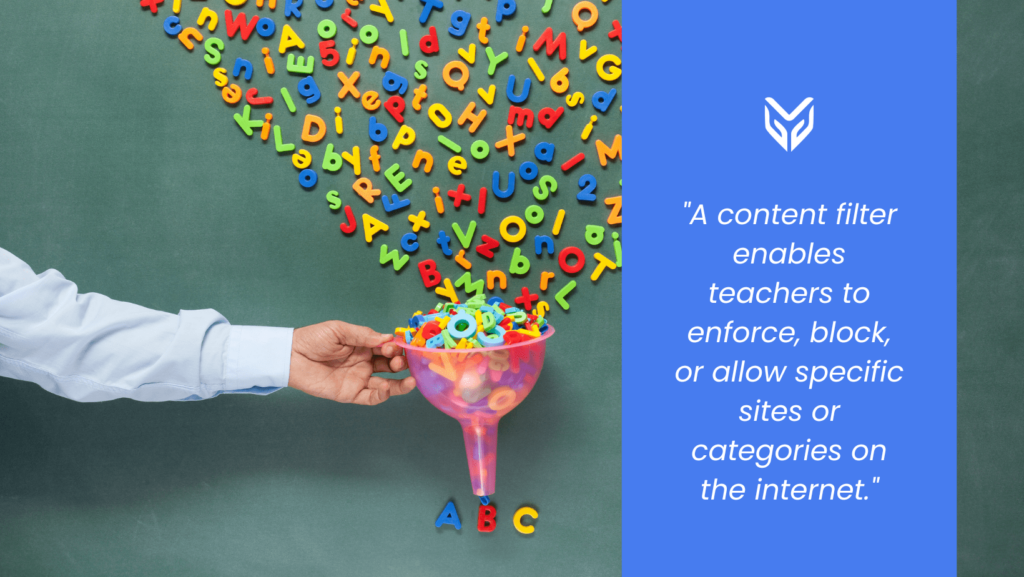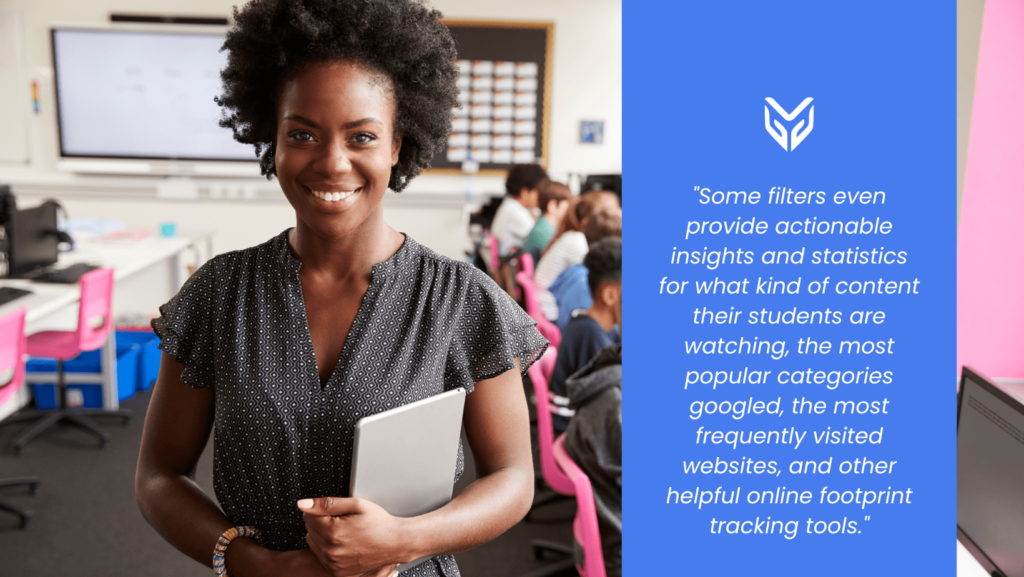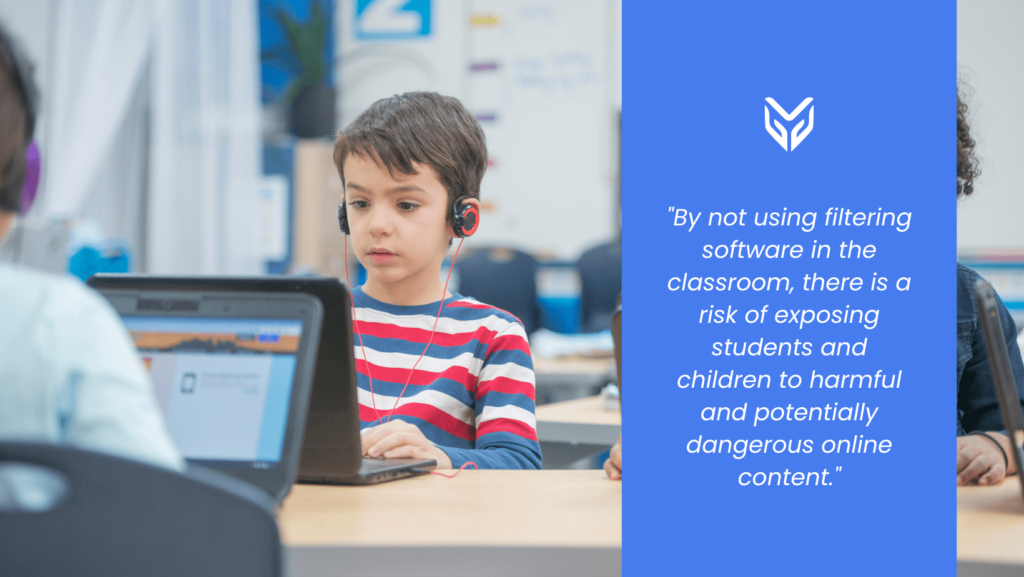NEWS
Why You Should Use a Content Filter In Your School

Many teachers and educators from K-12 districts and schools consider applying technology in the classroom. There are many tools readily available and easily accessible for every member of the internet; all it takes is a couple of clicks to find out nearly everything about any subject. But, like all things, there is a downside. While good and valuable content is available for everyone, so is the irrelevant and sometimes even dangerous content. There could be potentially harmful sites, distracting information, and malware/viruses behind any click. So what can you do to combat this? There are many ways ranging from using complicated extensions and paying for software to simply not going onto shady sites and using only previously visited reliable ones. But perhaps the most effective method is to use a content filter. In this article, we will list and describe the reasons why this is such an important tool. Read on!
Improves Pedagogy
As you can probably guess, the main motive for using a school web filter is to improve students’ focus and increase pedagogy. Having zero distractions in the classroom is a huge benefit, but it may be even better than you think. In a study by the IES, researchers used brand-new technologies to pinpoint the amount of time students spent off-task during school hours. They tracked every student in more than 50 classrooms, ranging from kindergarten to fourth grade.
With the result, they concluded that roughly a quarter or 25 percent of an elementary school student’s time in the classroom is spent being distracted—not learning! More specifically, the researchers concluded that the students:
- became more distracted as the school year progressed.
- were more likely to become distracted by longer lessons than shorter ones.
- were more likely to become distracted during whole-group instruction than individual or small-group instruction.
- Girls were more likely than boys to be distracted by their peers.
- In general, girls were more likely to stay on task than boys.
- For every 4 lessons a teacher holds, 1 is completely ignored or dismissed by the students, from being distracted and not following along.
This may sound alarming, but there are solutions to tackle it. A content filter enables teachers to enforce, block, or allow specific sites or categories on the internet. For example, teachers may want their students to use the internet only to look up information about a sport. So they use a content-based filter and allow only the category “Sports”, or inversely, they block all categories that are not “Sports”.

They can also restrict specific sites; for example, a gaming website with a name similar to “sportsgames.com” and an informational site like “learnaboutsports.org” both fall in the “Sports” category, but one of them is helpful while the other is distracting. In that case, teachers can block the gaming site and allow the informational one. They can also block by URL, restricting specific sub-pages on the informative website if they want.
Extremely Easy to Set Up
Content filters are also fairly easy to set up and use. Most of the time, you will only have to download and install them, then enable an extension or add other devices you wish to filter through the software’s dashboard. And with some solutions, you don’t even have to do that. Some companies, like Blocksi, offer an entirely cloud-based solution. That means there’s no software involved, and you don’t have to install anything. You simply enable the extension on the device, and voila! They’re also completely customizable to suit the needs of your teachers and students, which is another plus. And you can import predefined specialized block/allow lists from any school, and you can share these lists with other teachers.
Using the Internet Makes Learning Fun
The internet can be an excellent tool if used properly. The wide variety of learning material, infographics, presentations, graphs, and videos is instrumental in a classroom as it allows students to learn in whatever way they want. This, in turn, makes students feel much more encouraged and motivated to learn, obviously improving curriculum and pedagogy. In fact, students might be encouraged to learn on their own in their free time, furthering their education and expanding their knowledge. Some filters even provide actionable insights and statistics for what kind of content their students are watching, the most popular categories googled, the most frequently visited websites, and other helpful online footprint tracking tools.

Good Practice/Habits for Later in Life
They say your habits will become your future, so keeping students focused on their tasks and ready to learn is an excellent habit in all life stages. But with all the distractions you can easily find online, it may seem more challenging than expected. Using a content filter, this becomes much easier. Students can dedicate all their time and focus to their current tasks and complete them more efficiently and quickly than before. Keeping them engaged and fixed on the task at hand creates a healthy practice or habit, which translates well into adult life.
Not Risking Exposing Students to Harmful Material
By not using filtering software in the classroom, there is a risk of exposing students and children to harmful and potentially dangerous online content. There is no shortage of destructive material that can be found on the web, and it isn’t hard to find. Using content filtering allows students to safely and securely access the web and browse whatever they like (or whatever their teacher allows at the moment) without the risk of stumbling upon sites featuring violence, weapons, alcohol, drugs, sex, gore, or other inappropriate, irrelevant material. You can still teach students about these things by implementing special search measures and a block/allow list. You can, for example, allow them to search for violence on Wikipedia but block other damaging distracting sites. Or you may enable them to look up drugs on YouTube for learning and disallow them from visiting online stores.

Protecting Students
Using URL and web filters can, in some cases, even save a life. Some software that offers content filtering also provides users with insights, as we said before. And in those insights, users can see exactly which user accessed which page. They can also see if a blocked or restricted site/URL was visited and what that site was. This allows teachers and admins to recognize any signs of potential self-harm, bullying, and violence early and consequently prevent it and seek help. Along with insights and statistics, products like Blocksi even offer trend analytics, which tells the user what trend each student follows when online. It shows them what sites they frequent most and can detect danger from self-harm or bullying even faster than humans.
In conclusion, a content filter is a useful tool that every school should implement, at least on the basic level, to block and allow content. Overall, using a web filter can benefit schools in several ways—from blocking inappropriate and irrelevant sites to enabling teachers to focus better on teaching. Put simply; internet filtering software takes away much of the headache involved in dealing with inappropriate websites and online content. Other than these benefits, you can add whatever you want to be blocked on your school’s internet with parental controls on the software. These controls can block certain file types and either completely block sites or allow access only after user input of preset text sequences. Finally, you can use filtering software as a deterrent against any attempt to hack into the system at your school.
SOURCES





